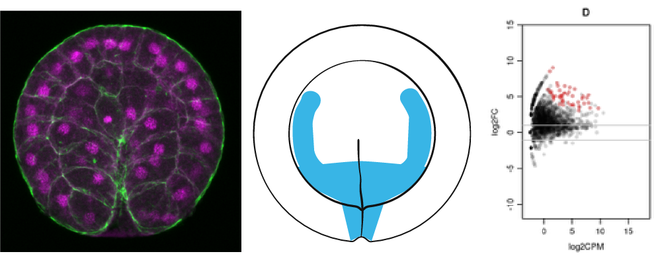Supervisor: Andreas Hejnol (University of Bergen), Co-supervisor Davide Pisani (EMBL Heidelberg)
Student: Ferenc Tibor Kagan
Objectives: The animal vegetal axis of the fertilized egg is the first embryonic axis (primary axis) around which the major body axes (e.g., anterior-posterior, dorsal-ventral and left-right) are organized. The aims of the project is to understand primary axis formation in animals and to reconstruct the evolutionary history of the primary axis specification using comparative genomics and transcriptomics and functional validation of the finding in diverse undersampled ecdysozoan invertebrates (priapulids, marine nematodes and nematomorphs and spiralian outgroups (Nemertea, Gastrotricha)).
O1: Combine single cell transcriptomics, comparative genomics and organismal approaches to determine the genes involved in oogenesis across taxa to detect major evolutionary changes. Single cell and tissue transcriptomics of gonadal tissue and oocytes will deliver a list of new candidate genes.
O2: Test identified genes for their function by detection of mRNA during oogenesis and localization in the fertilized egg.
O3: Survey of publically available genomes and novel genomes sequenced in IGNITE to reconstruct the evolutionary history of target genes and provide insights into the variability of the essential process of axis determination in animals.
Secondments: Detlev Arendt (Heidelberg), Yu Wang (Leibniz-Supercomputing Centre of the Bavarian Academy of Science and Humanities, Munich), Eduardo Pareja (Granada)
